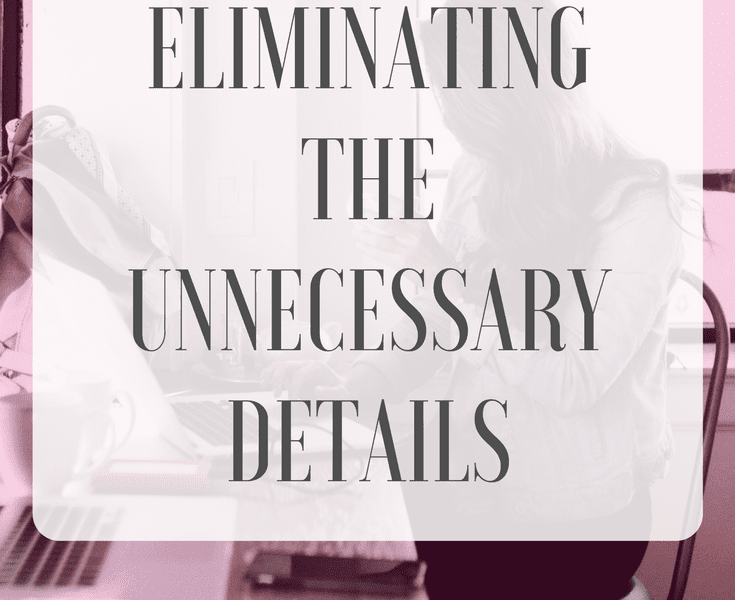I read a quote on the design software I use that struck a chord this week. I’ve been doing a lot of editing, and this is a major part of what I do: “Great design is eliminating all unnecessary details.” ~ Minh D. Tran
Every word you write is important, especially if you have a word count to meet. But that doesn’t mean that the words are important to take up space.
One of the pieces I’ve been editing started at over 3,000 words. It needs to be no more than 1,300. So how do I make it work? How can I possibly cut the right words and still have it make sense?
This is frequently a place where writers pause. Editing (or killing words that you lovingly cradled in your arms) is a tough job, but the truth is, you can’t be in love with each and every word you write, or somewhere along the way, you’re going to be very upset. Whether you or an editor cuts them, they will be cut. Someone will see a way to tighten them, and it’s best if that someone is you. Why? Because whether you pay an editor by the word or by the hour, you will waste your money if the piece isn’t as tight as you can possibly make it before they get it.
So here are a few “big-picture” things (as opposed to individual words) you can chop out when you need to edit.
- Information about the topic that don’t relate to your purpose. One of the pieces I edited recently was supposed to entice women to attend a certain country club for a golf outing. Sounds simple enough, right? But the writer included stats at the beginning of the piece about how the number of people who regularly play golf has greatly dropped over the last 20 years. That was an easy cut! Why? If your purpose is to encourage people to do something, then why would you want to tell them that fewer people are doing that activity, especially if you aren’t citing a reason for the decline? Don’t muddy the message. The bandwagon approach is an old marketing technique, and it works in the reverse as well. If people aren’t doing something, then maybe it’s not a good idea for you to do it either.
- Phrasing that could be just as effective if it’s summarized. Sometimes we want to talk a lot about a topic we feel passionate about. We may present an idea and then go into several different examples of the idea. But consider whether all those examples are necessary. Personally, I try to keep the number of examples to no more than three, but if the concept can stand alone without the examples, then consider cutting them. When the idea is easy enough to understand, examples aren’t necessary.
- Though the backstory is necessary to talk about where we are today with the topic, this is an excellent place to review for excess verbiage. Often we include details here that don’t matter or extra dialogue or characters that aren’t needed later on in the piece. Remember to stick to the point and give just enough information to set the scene for the rest of the narrative. Don’t tell me every single thing and person on the playground. Don’t tell me the tiny details of the day. If a feeling is important, keep it. Try to focus on the why. If your story is about how you overcame a difficult situation, then focus on what got you into that situation. Remember that people have short attention spans, and they know the intro or the backstory isn’t the meat that they are after.

